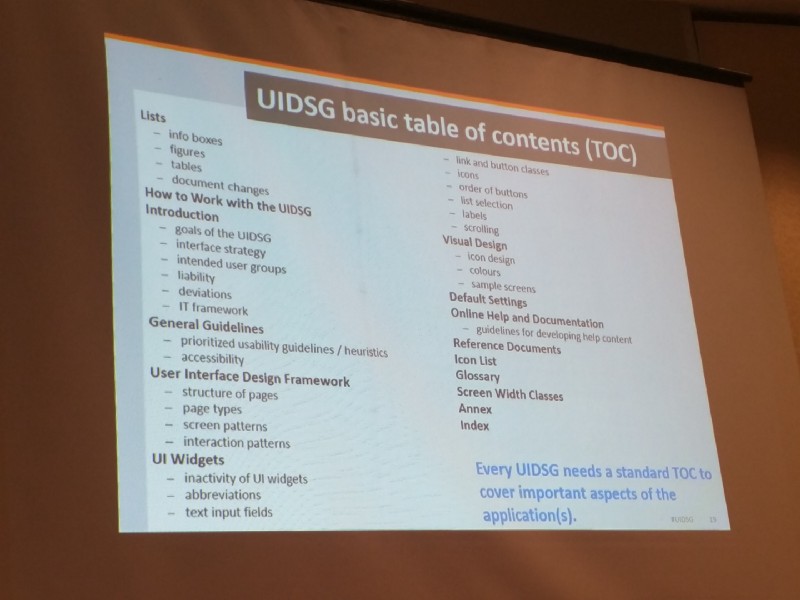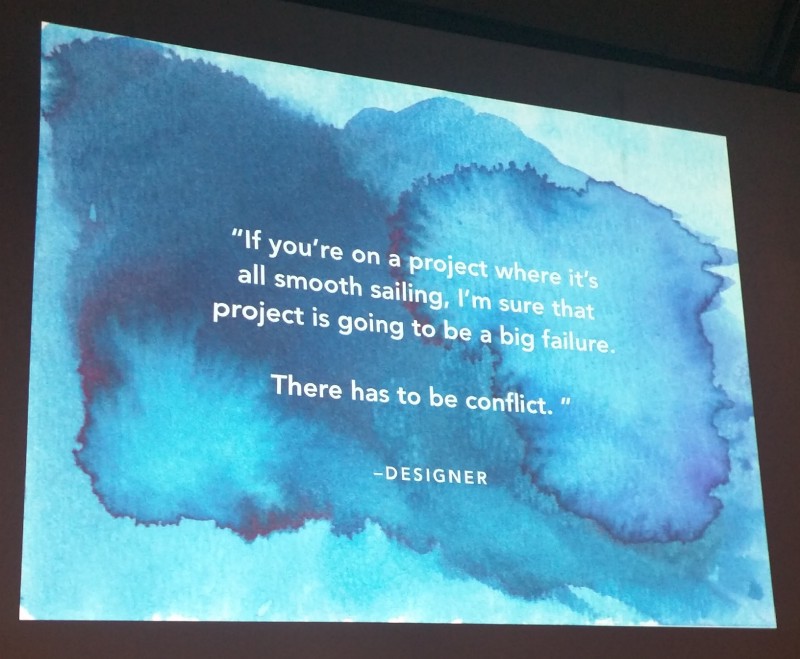UXPA 2017 — Notes from Day 3 (June 8)
Published on Jun 9, 2017
On the last day of the User Experience Professional Association (UXPA) Conference, I continued the deep-dive into UX that I desperately needed. After surrounding myself with the amazing talks and participating in engaging conversations, I am totally inspired. In this post, I am happy to share with you my notes from the talks I attended.
User Interface Design Style Guides are Not Dead, they Just Smell Funny
Presented by: Michael Bechinie
A User Interface Design Style Guide needs its own project to survive
- A user interface design style guide (UIDSG) doesn’t replace human-centered design activity. It is part of design management and provides a foundation for consistent, and more usable, user experiences.
- Your UIDSG will always be complete and can be improved through continuous iterations. It is not a license to stop thinking.
- A UIDSG can be a single document, an interactive webpage or a wiki. These can be incorporated into production tools to make following the style guide the path of least resistance for development.
- A good table of contents, search and meta-data (like version numbers, findings to support design decisions, etc.) make referencing a UIDSG useful and usable.
- Developing a UIDSG and advocating its use by developers, analysts and test teams increases awareness towards consistency within the entire organization — this makes an interface’s usability as important as its utility.
 What should be in your UIDSG
What should be in your UIDSG
Show Some Emotion: Personality in UX Design
Presented by: Ashley Pulli and Morgan Knepper
You should be trying to design a conversation with your users
- A user experience’s personality can be defined by how it Looks (the visual system), Talks (the voice and tone) and Acts (motion).
- Good design is appealing and a cohesive visual language establishes the way that your interface will be perceived.
- Use interjections and other natural conversation elements to make it feel like your interface is talking with your users — even if you tend to have more formal or informational content.
- Motion tells the story of the user interface and connects its visuals into an understandable “body language”
- Personality is what attracts us to people and repels us from others. Establishing a personality more naturally connects users to what you are trying to convey.
 People expect more from computers than a robot on the other end
People expect more from computers than a robot on the other end
New Mobile App Heuristics: guidelines to quickly boost the user satisfaction of your app by 50%
Presented by: Jonathan Haber
It’s okay to be a little bit different. As long as it’s usable.
- Using Neilsen’s heuristics, published in 1995, to evaluate present day (mobile) technologies is difficult and sometimes incomplete
- We often assume that our user’s computer skills evolve over time and that they become more accustomed to complex interfaces and learned metaphors. This is a mistake. Our users are less tech-savvy than we think.
- Use Neilsen’s heuristics, along with Robots and Pencils’ mobile heuristics (link not available) to evaluate and rank usability issues within a design.
- Do not rush to change to a particular standard, guideline or design system — but still try to adopt new practices often. These standards evolve over time and we must develop our evaluative methods with them.
- Establish heuristics within your UX organization by collecting usability problem’s across a variety of studies. Evaluate these problems frequently, coding them in grounded theory. If new patterns develop, incorporate them into your heuristics (and share them with the UX community)!
)](/img/medium/1__ycMGFDig1gJpirCQmLXMIQ.jpeg) Across 33 rich countries, only 5% of the population has high computer-related abilities, and only a third of people can complete medium-complexity tasks. (NN Group, Nov. 2016)
Across 33 rich countries, only 5% of the population has high computer-related abilities, and only a third of people can complete medium-complexity tasks. (NN Group, Nov. 2016)
Surviving your UX Career
Presented by: Jessamyn Miller
When conducting feedback sessions, be specific about what you want to get feedback on — don’t let others derail the conversation.
- When you don’t have enough time, make time for your work by declining meetings, voicing your deadlines and prioritizing aggressively. Get things done by “time boxing” your work — no one will have pity on you if you miss a deadline “because [you] were in meetings”
- When you’re asked to do too much, say “no” and protect your time. When your whole team is being asked to do too much, ask “what is really the top priority?”
- Low support can come from lack of trust, lost relationships at work or an ever-changing boss. Ask for help, switch projects (or change companies) and find (or start) a club — create a safe place to try, fail and ask questions.
- When receiving negative feedback, keep your cool, don’t make excuses and try to negotiate to make sure you are understood.
- A lack of influence from UX in your organization can be fought by showcasing your work and better articulating your designs. Power phrases like “For that reason…” and “This tested well/poorly” support your design decisions with logic. Phrases like “Do you agree?” and “Do your best” ask others to actively pursue solutions, rather than passively dismissing your designs/research.
 Fun fact: these water color backgrounds were painted by the speaker, her husband and a friend
Fun fact: these water color backgrounds were painted by the speaker, her husband and a friend
Closing Keynote: Bringing Your Humanity to Work
Presented by: Meena Kothandaraman
[Qual and Quant] work in concert with each other
- Human moments contain emotion, meaning , purpose and choice. These make us people. It is challenging to have these moments in the work place and in our user’s experiences.
- Organizations have shifted away from humanity — human complexities are rarely considered or incorporated.
- It is the responsibility of UX to refocus our organizations on moments of humanity — asking ourselves, “what moment can I focus on?” every day.
- Organizations have shifted to number of all kinds but we don’t need numbers for everything. By trying hard to be efficient, we’ve lost the ability to feel.
- UX can advocate for humanity if we:
- Nail the basics
- Challenge gratuitous practices
- Understand the heart of the story
- Embrace the emotions
- Schedule reflection to be part of the timeline
 Does your family *really* expect you to be “highly productive”?
Does your family *really* expect you to be “highly productive”?
That’s all folks!
I have learned so much in the short time that I attended this conference. These bullet points, quotes and slides cannot even come close to summing up the world of information that I absorbed this week.
I missed something important, summarized something wrong, or just want to start a relevant conversation… feel free to leave a comment, below!

